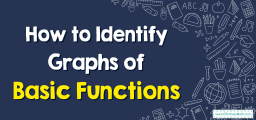Connecting Limits at Infinity and Horizontal Asymptotes
A horizontal asymptote is a horizontal line that tells you how a function behaves at the edges of a graph. The following step-by-step guide talk about limits at infinity and horizontal asymptotes.

If a function has a limit at infinity, when we get farther and farther from the origin along the \(x\)- axis, it will appear to straighten out into a line.
As \(x\) approaches infinity, we can find the equation of this line by considering the limit of our equation. This line is called an asymptote.
Related Topics
A step-by-step guide to connecting limits at infinity and horizontal asymptotes
It is common for functions to display asymptote behavior. Graphically, this means that their graph approaches another geometric object (typically a line) as the function’s graph moves away from its origin.
We use limits in mathematics to illustrate circumstances in which a function approaches a certain value, which is why asymptotic behavior requires limits.
You may recall learning about asymptotes in algebra class. Limits in calculus allow us to prove the existence of these places.
Horizontal Asymptotes:
In order for \(f(x)\) to have the horizontal asymptote \(y=L\):
\(\color{blue}{lim_{x\to ∞} f(x)=L }\) \(or\) \(\color{blue}{lim_{x\to -∞} f(x)= L}\)
Must be true.
Therefore, to find horizontal asymptotes, we simply test the function’s limit as it approaches infinity and again as it approaches negative infinity. Asymptotes may only be horizontal in one direction at a time.
Connecting Limits at Infinity and Horizontal Asymptotes – Example 1:
Find the horizontal asymptotes of the function. \(f(x)=\frac{1-2x^3}{x^3-4x^2+2x}\)
To determine whether there are horizontal asymptotes we must evaluate the limits at infinity:
\(lim_{x\to ∞}\frac{1-2x^3}{x^3-4x^2+2x}\) \(=lim_{x\to ∞}\frac{\frac{1}{x^3}-2}{1-\frac{4}{x}+\frac{2}{x^2}}\)
\(=\frac{0-2}{1-0-0}=\frac{-2}{1}=-2\)
The function \(f(x)\) has a horizontal asymptote \(y=-2\).
We can calculate \(lim_{x\to – ∞ }f(x)=-2\), so \(y =- 2\) is the only horizontal asymptotes .
Connecting Limits at Infinity and Horizontal Asymptotes – Example 2:
Find the horizontal asymptotes of the function. \(f(x)=\frac{x^2-1}{x^2-x-2}\)
To determine whether there are horizontal asymptotes we must evaluate the limits at infinity:
\(lim_{x\to ∞} \frac{x^2-1}{x^2-x-2}=lim_{x\to ∞} \frac{1-\frac{1}{x^2}}{1-\frac{1}{x}-\frac{2}{x^2}}\)
\(=\frac{1-0}{1-0-0}=1\)
The function \(f(x)\) has a horizontal asymptote \(y=1\).
We can calculate \(lim_{x\to – ∞ }f(x)=1\), so \(y = 1\) is the only horizontal asymptotes .
Exercises for Connecting Limits at Infinity and Horizontal Asymptotes
Find the horizontal asymptotes of the functions.
- \(\color{blue}{f(x)=\frac{2x^2-4x+8}{3x^2-27}}\)
- \(\color{blue}{f\left(x\right)=\frac{x}{1+x^2}}\)
- \(\color{blue}{f\left(x\right)=e^{\frac{1}{x}}}\)
- \(\color{blue}{f\left(x\right)=\frac{x^2+7x+12}{-2x^2-2x+12}}\)
- \(\color{blue}{f\left(x\right)=\frac{x}{\sqrt{x^2+1}}}\)

- \(\color{blue}{y=\frac{2}{3}}\)
- \(\color{blue}{y=0}\)
- \(\color{blue}{y=1}\)
- \(\color{blue}{y=-\frac{1}{2}}\)
- \(\color{blue}{y=1, y=-1}\)
Related to This Article
More math articles
- 8th Grade OST Math Practice Test Questions
- How to Evaluate Logarithm? (+FREE Worksheet!)
- Convert Between Fractions and Decimals
- Decimals Unfolded: How to Switch Between Standard and Expanded Forms
- Absolute vs Conditional Convergence: Key Differences Explained
- How to Identify Time Patterns
- How to Solve Linear Equation and Inequality Word Problems?
- How to Write Polynomials in Standard Form? (+FREE Worksheet!)
- Full-Length 8th Grade Common Core Math Practice Test
- Weight Measurements


























What people say about "Connecting Limits at Infinity and Horizontal Asymptotes - Effortless Math: We Help Students Learn to LOVE Mathematics"?
No one replied yet.